Canon EOS C500 – Review & short film “ALEX”
Watch our C500 short “ALEX” and share your thoughts! It’s the first short film shot on this 4K camera outside of Canon’s control – we did it all on our own, and I share all my thoughts below, unfiltered.
Please go to the Vimeo page of the short by clicking here and download the 1080p version of the film for best quality viewing.
WE ARE WORKING ON A NEW GRADE of the short. Please read my comment by clicking here for detailed explanation on what we plan to do.
Here’s Patrick Zadrobilek’s brilliant Behind-The-Scenes-Video:
The hands-on video with the C500 is also coming soon. 4K version will be uploaded to YouTube next week after the new grade is done. Check back here over the next few days!
Beyond the C300
I love my Canon C300. I have been in love with its image, form factor and versatility ever since I shot the test short “13:59” on a pre-production unit (watch the short here) with director Mario Feil & a great team almost exactly one year ago.
Since I got my C300 literally two days before we started shooting the fictional short film “Homophobia” (watch here) in February 2012, it has been my main camera for a huge range of jobs. I have used it for corporate films, music videos (here’s one), TV reports, documentaries (like “The Mosaic of Life”, where I was C300 operator alongside Rodney Charters, blog soon!), as well as TV drama – only recently I shot scenes of Vienna for the NBC series “GRIMM” on the C300.
So as you can see – it’s one hell of a versatile camera. Does it do everything though? Of course not. No camera does. But for me, of all the cameras I have used so far, it’s the one that ticks most boxes for what I do.

1st AC Alois Kozar Jr. and DP Nino Leitner, AAC on the set of “ALEX”, the first C500 short film outside of Canon’s control
Shortcomings of the C300 – 8-bit and 2K
One of the much complained-about features of the C300 is its lack of 10-bit colour recording or output – it only does 8-bit, internal and externally. If you are new to this, you might think, what’s the big difference? When colour grading, it actually makes a huge difference, because 8-bit simply means that only 256 shades of a single colour can be recorded, for a total of around 16 million colours. 10-bit allows for 1024 shades, resulting in much more detailed colour information. You might have witnessed a banding effect in footage of the sky, which is a typical phenomenon if there is not enough colour information available.
Having said that, the C300 makes most of what’s available in 8-bit. I have hardly ever come across a banding issue and even in post production, the 4:2:2 8-bit colour space of the 50MBit/s MXF files holds up remarkably well, better than of any other 8-bit camera that I know. But it IS definitely a limitation if you are talking about in-depth colour correction, special effects or green screen work. The Sony F3, which now comes with its S-Log feature factory-enabled now, costs roughly the same as the C300 and comes with 10-bit output capability – albeit in a bigger form factor and inferior internal codec recording.
The second “shortcoming” of the C300 is the fact that it does not record or output 4K (although it has a 4K sensor which results in tack-sharp 1080p images). To be honest, 4K to me still is something that is very far from being a necessity, but the industry is clearly moving in this direction – with a lack of viewing devices and even theaters equipped with 4K projection, it’s still a long way to go. I don’t see the necessity to have a 4K screen at home soon – and considering the fact that the average TV audience has only now concluded the transition to HD TVs, I doubt people are willing to shell out money again to upgrade to a 4K television. The visible difference between SD to HD is much bigger than 1080p to 4K, if you have a TV that is smaller than 60” and if you sit away at an average viewing distance.
Anyway, 4K is the hype now even though its use is limited – but of course you are future-proofing your footage if you shoot 4K now. How necessary that is, is totally up to you – considering that the new James Bond flick “Skyfall” was shot in 2.5K Raw on the Alexa by Roger Deakins, I don’t give too much thought to “future proving” anything I shoot today.
BUT: you open up to opportunity to reframe in a 1080p timeline if you have shot in 4K. That actually is quite useful, for example if you want a “fake second perspective” in an interview shoot. However, if you are a DP who is rarely editing his/her own work, be aware that it also opens up your footage for “re-interpretation” by the director or editor in the post production process beyond your control.
C500 – a super-pimped C300?
At NAB 2012, Canon announced the extension of its C-series lineup by announcing the C300’s “big brother”, the C500. Almost the same body, the same sensor and the same internal recording came as a bit of a surprise to the audience, but mostly in a positive way – simply because the form factor of the C300 proved so popular and versatile, it was a smart move by Canon to retain this form factor. All 4K and 10-bit (4K) and even 12-bit (2K) recording capabilities can only be used if you utilize an external recorder.
Preparing and shooting “ALEX” – the C500 test film
For half a year, I couldn’t wait to get my hands on the C500 and try out the new features. Tamás Kiss, a young director who I became friends with during a corporate film I shot with him this past summer, was similarly excited about the upcoming C500. He went to great lengths to write a script for a short film, organize actors and locations for it – while I was busy organizing camera and lighting crews for it.
And suddenly, only weeks ago, a call came in – Foto Dinkel, a big photography equipment dealer from Munich, told me that they could send one of the first C500’s worldwide to use and test for our film. A production model (unlike last time), serial number 00000000006, an EF mount version of the camera.
The game was on!
A busy week of organizing everything followed. Having a new camera that everyone is excited about is a great thing – but not mainly because of the camera itself. You ask why? Well, it gives you a chance to work on a free and unpaid “passion project” while getting a lot of likeminded filmmaking freaks to join in along the ride.
Whenever I can, I try to shoot something meaningful on these “test” shoots these days. For the C300 that was “13:59”, for the C500 it’s our film “ALEX”.
Firstly, a film with a story is something that can last – way beyond the lifetime or the newsworthiness of a particular camera. While many people will initially watch the film for the mere fact that it was shot on the new C500, we hope that it sticks in their mind for another reason – being that it is a good story, a story worth watching and telling your friends about.
Secondly, using a new camera (or any new piece of kit, for that matter) on an actual planned shoot (actors, lighting, locations and tough schedules!!) means that it immediately isn’t about the camera anymore. The camera simply has to work in that environment, and if it does, it’s the best proof for its feasibility in the professional field.
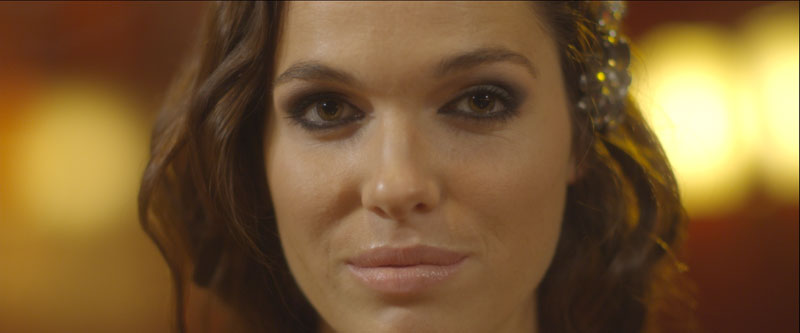
… and a girl.
(Our lead actress Verena Altenberger. Still frame from the film, DPX with levels applied.)
Getting the C500 ready for 4K production
So the C500 was on its way to my office, but without a 4K recorder we knew that it would be basically a C300. The C500 can’t record anything different from the C300 internally – it’s the same MXF files with the same bit rate (50MBit/s at 4:2:2), even the internal high speed recording isn’t any better (it’s 720p at 60fps in NTSC mode, and 30fps in 1080p mode). An external recorder was essential, and in the beginning we had our share of troubles sourcing one for our shoot.
External C500 recorders – the options
Canon themselves to not produce a recorder for their C500, which is essential for 10- or 12-bit 2K or 10-bit 4K recording. This may strike you as odd, but I think it’s simply not Canon’s field of expertise, and they leave that to other companies who know how to do that better (for now).
With the camera still being very new, the available options are of course very limited. Let’s have a look at what recorders are out now and which ones are around the corner.
Codex Onboard S & M Plus Recorders
The Codex recorders are probably the most high-end options on the market, with pricing around $20,000 one costs almost as much as the C500 itself. They will be upgraded to support Canon Raw, but we were told the units won’t be out until late January 2013. They record the Canon Raw codec uncompressed, which results in a lot of data, but it’s mainly geared towards high-end productions: Codex recorders were used to record the ARRIRAW footage off the Alexa for Skyfall, the latest James Bond movie.
AJA KiPro Quad
I was hoping for the AJA KiPro Quad to be available for our test shoot but unfortunately no luck – I have looked at a dummy at NAB, IBC and Photokina this year, but I have yet to see a working version of this. The upside is that the KiPro will record ProRes like its siblings. It promises to be the most versatile option for the C500, because it will be able to capture to “edit-friendly 4K, 2K or HD ProRes”. The estimated price is at $4,000 also quite affordable. Let’s see if it delivers, and I’d love to use the C500 again with this device.
Convergent Design Gemini 4:4:4
The Gemini 4:4:4 was the only recorder we were able to get our hands on for the shoot, supplied by AviSys, the official Austrian dealer for Canon Pro products. It’s a $6,000 device that records Canon Raw uncompressed onto two SSD drives (striped for speed). The files have to be put together from the two drives after transferral using a dedicated Clip Merger tool that works very quickly.
Realizing that we would need 2 Gemini’s to utilize the 120fps high-speed recording option in “4K half raw”, we got another one from DigiRental Vienna. (Thanks to Alexander Boboschweski aka Bobo and Alois Kozar Jr. for their efforts in securing the recorders!)
The final firmware necessary to record Canon Raw using the Gemini 444 wasn’t out yet, so we had to work with the pre-production firmware which recorded a thick blue line in the bottom third of the image. The reason for this is the fact that Convergent Design asks for $2,500 for the firmware update, that’s on top of the $6,000 price for the device. So you end up spending $8,500 for the Gemini 4:4:4 if you want to use it with the C500.
Unfortunately, despite the fact that one of the units we had was a demo unit owned by Convergent Design themselves, the company was unable or unwilling to supply us with a pre-release firmware update which would disable the thick blue line in the 4K raw files.
I opted for the simplest work-around, which also fitted the mood of the film: We cut off the image right above the blue line and I decided to frame for Cinemascope. It looks great anyway and it’s been a while since I had shot in such a format. Looks much more cinematic. Take that, Convergent Design 😉
The second recorder turned out to be useless to us because we were not able to get the higher frame rate recording to work. We don’t know if it was our mistake or due to the early firmware, but the files that were recorded onto the two Geminis when we tested 120 fps recording were unreadable by the software. So we opted to leave out all planned slow motion shots – we simply were not able review the footage and we don’t know if it was broken or not. That’s one of the problems of the C500: Due to the fact that you can only record MXF files in their standards internally, it is of course impossible to record a compressed 120 fps version internally simultaneously. Real-time recording at 24, 25 or 30p works perfectly internally, and you can record both internally and externally using the Gemini for “normal” stuff. So even if the 120 fps output recording will work in the future, it won’t be possible to review the compressed proxy rushes from within the camera, like you do with the internal recordings of real-time material. A real bummer!
The Gemini 4:4:4 is advertised as the smallest 4K raw recorder on the market, and that seems very legit – but don’t forget that you need an external battery to power the device.
C500 form factor & ergonomics
We had Switronix and Anton Bauer batteries power the entire rig, both the camera and the Gemini recorder. Everything was held together through a Frankenrig setup made of parts that we had available – a mixture of the Red Rock Micro C300 Cage, the Bebop C300 base plate and Zacuto grips and Recoil C300-style shoulder pad whenever needed for handheld work. So yes, I kind of lost the advantage of the C500’s “smallness”, but I am sure there are better ways – but don’t forget that you will always need that external recording unit to actually make use of that 12-bit 2K or 10-bit 4K glory!
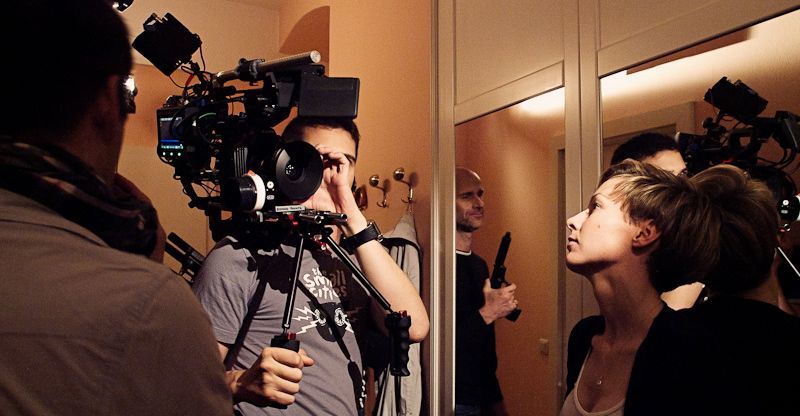
The “Frankenrig” on Nino Leitner’s shoulder during the hallway scene in “ALEX”, with the second 1st AC on that day, Laura Ettel, standing by.
The C500, as mentioned above, is like a C300 in so many ways. From the outside, there are only few things that give it away as a different camera. Most parts are the same, for example the entire monitor / XLR unit as well as the handgrip. The most obvious difference is the heatsink / fan unit on the side, which replaces the much-loved handgrip of the C300. Missing the grip really makes the camera a little awkward to use without a rig, which was one thing that makes the C300 absolutely great, because it is one of very few cameras that can be used without a rig for a while. Canon obviously didn’t intend the C500 to be used without a rig much, and that makes of course sense whenever an external recorder is involved. But if you want to go “C300 style” and just record 1080p MXF files internally just like on the C300, you still need a rig for the C500 in order to make it work properly. My favourite rig for either camera is the Zacuto Recoil rig with the grip relocator (click here to check it out), because it adds so little weight, the camera sits right on your shoulder where it’s supposed to be, and you still have control over iris and record buttons via your fingertips. Genius, and you don’t have to carry dead weight around either.
At the back of the fan unit there are 2 new 3g SDI ports for 2K and 4K output, as well as 2 additional monitor ports. Only one of the 3G SDI ports is needed for 4K output, so the second one really is only needed if you hook up two Gemini recorders for higher frame rate recording in 2K or 4K (up to 120 fps in 4K “half raw”, which is recording only every second line, while maintaining the 4K horizontal resolution).
Other than the fan unit, Canon has changed only tiny bits of the body compared to the C300. The record buttons now have a red dot which might help to locate them when it’s dark.
We had an EF version of the C500 to shoot with, and I already noticed at IBC that Canon has redesigned the EF mounting system. I would call it a “PL style” mounting mechanism, and it is much better than the normal “photo-style” EF mount. On a normal mount (the one also used on the C300), you have to align the red dots on the mount and the lens and then turn the actual lens. That’s no problem with photo lenses but you might run into trouble if you have a rod system with a follow focus and a matte box in front of your camera. With the new system, you just align the camera with the dot and then turn the mount itself, just like on any PL mount. Makes it much easier to swap lenses in a “cine” setup.
I have also already reported about the C300’s issue of swapping lenses while the camera is running, which can actually kill a fuse within the camera and make it unusable until it gets serviced by Canon themselves (it happened to me after I shot this music video, scroll down for details on what happened).
Canon has addressed the problem, although not completely solved it. The C500 features a “Lens Exchange” button, which, when pressed, puts the camera in a kind of standby mode which makes it safe to swap lenses. After you put on the new lens, you press the button again and it’s back up immediately. You still have to think about pressing that damn button before you take off the lens, but at least it makes the whole process a little faster (although the C300 & C500 are extremely fast to boot up anyway).
C500 internals, output – and the fan
As mentioned before, almost all the internal recording is the same as on the C300.
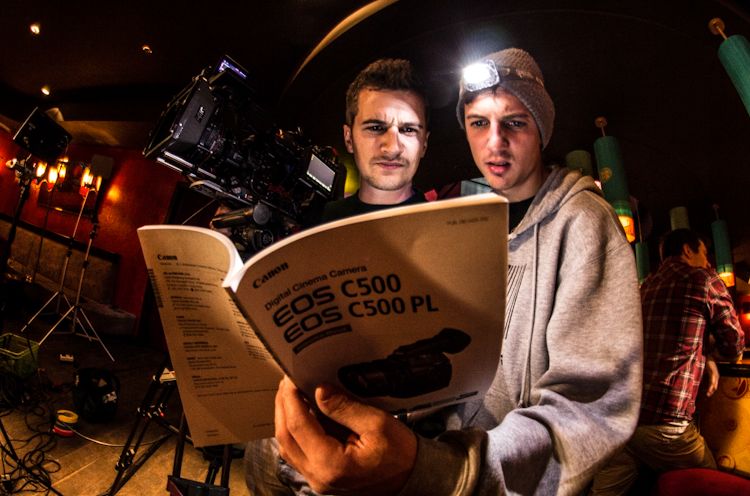
Director of Photography Nino Leitner and 1st AC Alois Kozar Jr. confused by all the output options described in the C500 manual 😉
There is one noticeable difference, Canon added some lower-quality options for recording in the internal MXF codec: Now there is the option to record 1080p not only at 50MBit/s, but also 35MBit/s, same size as Sony’s XDCAM EX codec (the F3’s internal recording), and 1440 x 1080 at 25Mbit/s, essentially HDV format. It’s nice to have though I don’t know when I would ever use these inferior and obsolete standards.
Regarding the menus – very few things were added, the most obvious being the 4K / 2K submenu which lets you set what the camera is outputting via its 3G SDI ports. There are two different varieties of 4K resolution (didn’t know that before, we chose the larger one at 4096 x 3840 pixels), both in 10-bit RGB 4:4:4. If you switch to “Half Raw” in 4K, you lose half of the vertical resolution but are able to output 4K at 120fps to two Gemini recorders. As mentioned above we tried this but it didn’t work, I blame it on the pre-production firmware of the recorder or our inability to put the files back together.
Here are all the external recording options of the camera:
10-Bit 4K RAW, up to 60fps
10-Bit 4K “Half RAW”, up to 120fps
12-Bit 2K 4:4:4, up to 60fps
1920 x 1080 RGB 4:4:4, 12-bit or 10-bit up to 60fps
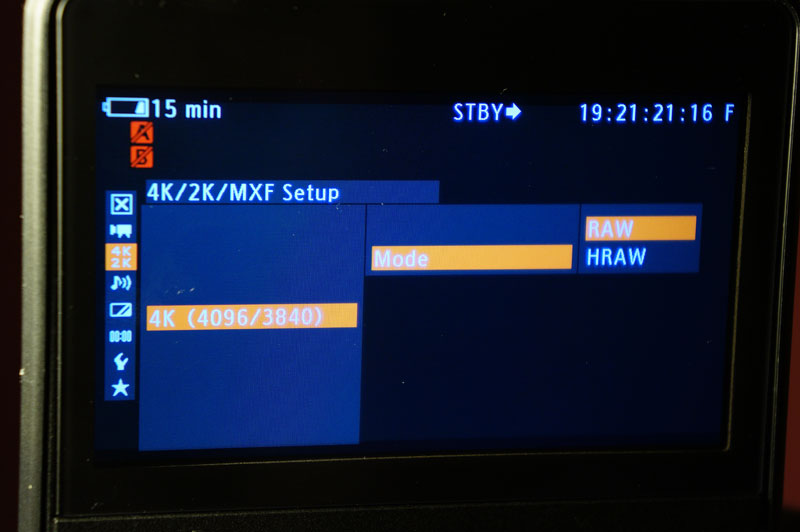
Canon C500 options include 4K “half raw” for high frame rate recording. We were not able to test this feature.
There is one significant addition to the last menu – the fan setting. There is only a small fan on the C300, which is noticeable in very quiet rooms especially when you have the viewfinder pulled out (because it’s located underneath. It’s not particularly nerve-wracking but sound guys have picked it up and complained about it when I was shooting press junket interviews for Universal Pictures. But it was well within limits.
The fan setting on the C500 has only two options – “on” and “automatic”. I have to admit that the first time I turned it on, I was surprised at how loud it actually was. And so was our sound team on set when the fan magically turned on right before we started rolling.
Yep, that’s a problem. The Automatic mode of the C500 fan does not seem to care whether the camera is currently recording or not. It simply spins up when the camera gets too hot, and that seems to happen easily and quickly even at room temperature.
We had several takes in which the fan started spinning half way through the take, making it hard for our sound recordist, so we had to reshoot takes because of that. Watch my hands-on video to actually hear it coming on (will be posted here soon).
I resorted to a trick to make the fan issue more bearable: Immediately after a take, I would switch it from “Automatic” to “On”, so it would start spinning even if it wasn’t too hot already. Then right before the director/AD called “camera”, I would switch back to “Automatic”, so it would stop spinning for a while because the camera was able to cool down before. Hardly any takes were long enough that it would start half way through after I started working like this. Then again, I don’t know how the camera will perform in hot environments, I expect the fan to be turned on all the time then.
This is a big issue and something that Canon can address and make a little in a simple firmware update. Canon, please release a new firmware version for the C500 which will switch on the fan immediately after you button off the record. When you start recording again, it can switch off again if the temperature is right. In case it isn’t, the fan should stay on but not switch itself off during recording (although I think that never happened to us). Having noise on record is easier to remove if it’s on an entire take, not only on parts of it.

The C500 comes with a plastic fan cover which has to be removed every time the camera is turned on. Otherwise you will get an error message telling you to remove it, then it reboots.
While we powered the C500 mostly off V-mount batteries on set, I did some tests with Canon’s own batteries, and found out that the C500 will run through one of the large Canon BP-975 batteries in about 100 minutes. It lasts around 240 minutes on the C300.
This is a significant difference of course, but not really surprising considering the massive amount of data the C500 is putting through compared to the C300.
Shooting 4K
Working with the camera was very straightforward. Being very experienced with the C300 we didn’t have to consult the manual once, and hooking up the Gemini with the camera was a very straightforward process. The Gemini always recognized the record trigger from the camera, you only have to be aware that it needs about 15 seconds to close the raw uncompressed files after you stop recording. I had my 1st ACs Alois Kozar Jr. and Laura Ettel always tell me whether the Gemini was recording after I hit record, and it always was.
We only ran into one recording issue with the Gemini which resulted in some of the clips being cut off by about 50 pixels on the side. I think this can be attributed to faulty connections via the SDI cable, but I am not entirely sure. It’s definitely something that Convergent Design should look into for final firmware releases.
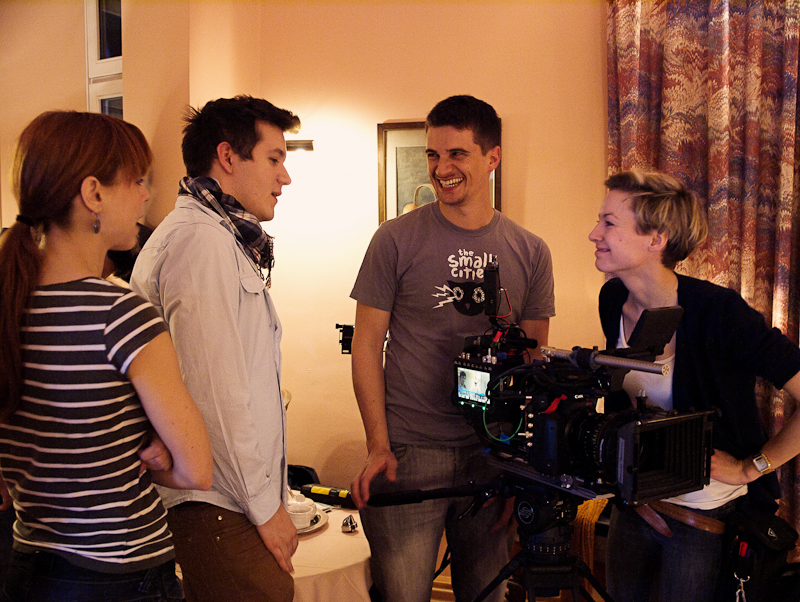
Katharina Dietl (production coordinator), Tamás Kiss (director), Nino Leitner (Director of Photography) and Laura Ettel (1st AC) on set of the C500 short film “ALEX”
So the great thing about the entire shooting process was that we didn’t have to work much different from shooting with a C300 and internal recording. We recorded internally as well, which resulted in MXF files that we could use for the edit as proxies, before reconforming to 4K at the end.
However, the amount of data generated by the Gemini is considerable, and we could not have done without a DIT on set, who was constantly copying and backing up the material to several hard drives. We had two 512 GB SSDs and two 256 GB SSDs, and we always had two of them at the DIT for copying footage and backing up, while we were shooting with the other two SSDs. This is actually the only way you can make this work because as mentioned above, when recording 4K, one SSD isn’t fast enough – the Gemini stripes the data onto two of them. It worked out for us because we were relatively economical when shooting and ended up having about 3TB or 3 hours of raw footage, that’s 1 hour of footage per shooting day (we shot for 3 days). The third day was probably most demanding because of all the hotel room scenes that we shot then – which of course resulted in some of the longest takes due to the dialog scenes.
Without my G-Tech Thunderbolt RAID I would have been utterly lost – it was the only device that could hold all the data we shot over the past few days at once, because 1 hour of footage equals roughly 1 TB of data. That would be my biggest problem – uncompressed raw is what everybody has been asking for, and now that we got it with cameras like the Blackmagic Cinema Camera or the C500, it’s actually quite clear that it’s something that is really hard to manage in post production. It costs a lot of time and money to deal with this amount of data, and I think I would use it for only about 10% of my current productions – really only high end jobs like commercials or fiction shorts or of course features. Nevertheless it’s great to have the options, but for 90% of what I do I would be far better off with a recorder like the Ki Pro Quad, which records straight to a ProRes variety.
We did not have 4K monitoring on set, so used the same setup as if shooting with a C300 – I framed my Cinemascope-ish image using the C500’s monitor, and the 1st AC used a Small HD DP6 for focusing when needed. We put tape on the monitors to give us the framing of the final image after the it was cut off below the blue line (the blue line of course only showed up on the Gemini, which acts as a half-decent monitor too, but not on the SDI output or the C500’s monitor). Of course the 1st ACs knew that focusing on 4K was much trickier.
I also have to thank my friends at A.F. Marcotec for helping with their tips regarding the Gemini firmware update – these guys really know their stuff!
They provide all my readers with a €500 discount on the C500 – just use this code: 311212NLC500 after you add the C500 (click here) to the shopping basket. Valid until 31 December 2012!
Canon Cinema Prime lenses
Thanks to AviSys, Bobo got his hands on the new Canon Cine Primes, and we were eager to compare them to a full set of Zeiss Compact Primes which we had available thanks to DP Bernhard Popovic, who loaned them to us.
Canon currently has 3 Cinema Primes available, the 24mm T1.5 L, the 50mm T1.3 L and the 85mm T1.3 L. As you can see, they are super fast …And we knew from the start that the comparison to the standard CP.2’s wouldn’t be a perfect one, as we did not have access to the faster Super Speed series of the Zeiss Compact Primes. Most “normal” CP.2’s are T2.1 and some even T2.9, which means they are considerably slower than the Canon Cinema Primes – but then again, don’t forget that they are cheaper too. A Canon Cinema Prime costs around $5,000, while you can get a Zeiss Compact Prime CP.2 at around $4,000 or less (if bought individually). The 50mm T1.5 CP.2 Super Speed version still is around $500 cheaper than the 50mm T1.5 Canon Cine Prime.
While, for instance, T1.5 vs T2.1 might not sound much on paper, it actually makes a whole lot of difference, because T-stops (or F-stops) are exponential values. T1.5 is about twice as light sensitive as T2.1. And considering the minimal light setups we used (see below) that sometimes made a whole lot of difference.
We tried to use the Canon Cinema Primes as much as possible. Actually, there are only around 5-10 shots in the finished film where we had to use the Zeiss CP.2 35mm simply because there is no such Canon Cine Prime yet. I really love the Zeiss Compact Primes but we tried to keep this shoot as much “Canon” as we could.
I loved the bokeh of the Canon lenses, it’s different from the CP.2’s – the Zeiss glass is very sharp, giving you a lot of great detail which of course compliments the C-series 4K sensor (for example, check out “Homophobia”, on which I only used Zeiss CP.2’s). These things are hard to put in words, but I think the difference in look between the Canon and the Zeiss lenses mainly stems from a more gentle sharpness fall-off of the Canon Cine Primes (compared to the CP.2’s). This fall-off and the bokeh is more like that of the Zeiss Master Primes, which are much more expensive lenses. Of course all this is highly subjective and I am sure many of you will have different views on this – but to me, the Zeiss CP.2’s have the better sharpness, whereas the Canon Cinema Primes make the overall image look more “cinematic”.
We only made one direct comparison, and that was between the 85mm T2.1 Zeiss CP.2 and the 85mm T1.3 Canon Cinema Prime. I will post the video later, and you will immediately see the difference.
Overall we were very happy with the performance of the Canon Cinema Primes. Their build quality is superb and they are heavier than the CP.2’s, plus their focus barrel moves easier than on the Zeiss. I think Canon can become a very strong contender in the entry-level Cinema lens market with their primes. I have yet to try out their zooms and compare them to the superb Zeiss Lightweight Zooms that I already had a chance to work with.
One huge disadvantage of the Canon Primes is the fact that you cannot change the lens mount by yourself. It seems to be possible to swap from EF mount to PL mount like it is with the Zeiss CP.2’s, but you need a Canon certified engineer do that – and that is something that is hard to work with in a rental environment, where most of these lenses will end up. Canon should give users and owners the option to swap the mounts themselves without voiding their warranty, otherwise they don’t stand a real chance against their competition from Zeiss.
Lighting & grip
This being a no budget production with everybody donating their time, labour and gear, we were tight on some parts of the production – one being the lighting equipment. In fact at some point we decided to keep it as minimal as possible, as my friend Bobo (a fellow DP, who was gaffer and Steadicam operator on this shoot) said we could use the KFlect Lighting system.
KFlect is a lighting system developed by fellow Viennese DP and AAC member Frederic Kaczek, and it’s based solely on different kinds of mirrors and reflectors. The idea is to a single strong light source, and you can distribute the light throughout your set, wherever you need it, using special reflectors. The reflectors come in all shapes and sizes – some of them are only used to send light from A to B, where it gets split up again by different mirrors with different surfaces. There are surfaces which make light reflect very softly, others hard, some striped, spotted … really whatever you could ever wish for.
It’s a very different way of lighting compared to the traditional way of doing it, using loads of individual HMI’s or tungsten lights, combined with Kinoflos or Litepanels. The KFlect system is a very natural way of lighting – having only one light source means that you can’t do “wrong” in a sense, because with only one source, light will easily look like it’s coming from the one natural lighting source that we have – the sun.
We tried to go super-minimal though and only used 2-3 Dedolights as our lights, sometimes combined with small Litepanels Micro. The light coming from these sources was distributed using the KFlect system. That means we skipped the one strong lighting source and went with several weaker lights, but it still worked great. I will do a more in-depth blog post about the KFlect lighting system once I have a chance to check it out in more detail.
Using that little amount of light … I gave the 1st AC Alois Kozar Jr. (and Laura Ettel) a hard time by shooting wide open on the T1.3 lenses quite often :-).
Also, we tried to remain shooting at ISO 850 whenever possible, which is the native ISO of the C500 sensor (also C100 & C300, they all use the same sensor). Only a few shots were shot at a higher ISO – notably some of the exteriors (following the actor to the car) as well as the fighting scene in the hotel room (because I increased the shutter speed to 1/400th of a second to get jittery movements that emphasize the action).
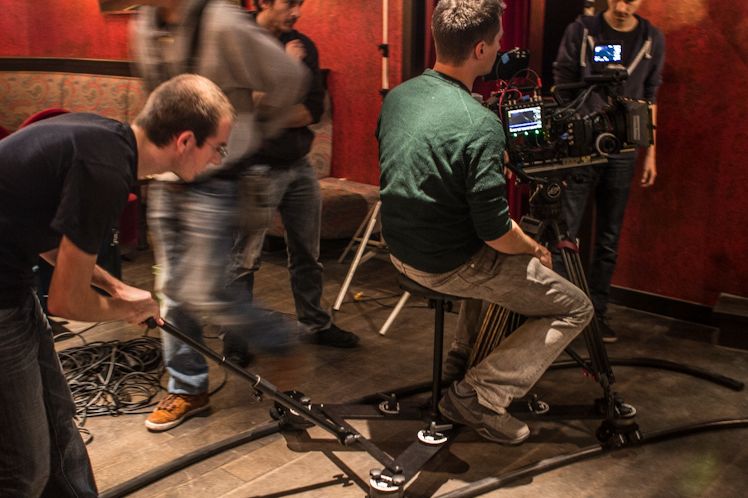
The CamDolly performed beautifully on our C500 shoot. It’s the most versatile dolly system I have ever used, it goes from very small (table dolly) to full blown dolly in many stages. Skate wheels, pipes, tubes, rubber wheels – you name it, it really works in every configuration. Review soon!
Another huge thanks has to go out to CamDolly – their founder Met Hrovat literally drove from Slovenia to Vienna simply to provide us with an incredible full-blown Cam Dolly. I reported about it before quite a while ago, but now it’s refined and close to perfect. It allowed us to make super smooth dolly movements with a full-blown dolly that is very easy and quick to build up. Can’t wait to use the Cam Dolly in its many other configurations. A review is to follow soon!
Post production
Tamás and I went into post production without much preparation, but luckily the great editor Andreas Ribarits was recommended to us by one of our electricians on set. Without knowing him, we asked him if he would be interested in editing one of the first films ever shot on the new C500 in 4K, and he said yes – probably without knowing what he was getting himself into!
Andreas turned about one of the most dedicated guys I ever met – he literally worked on this project around the clock for several days, and there was a lot of data to wiggle around with! He edited the film in Final Cut Pro X, and since I saw him working with it, I know for sure that this is one powerful piece of software – but there aren’t really many out there who are able to master it. He’s one of the few who really seems to know it inside and out.
Of course it was an offline edit because of the 4K, but we had to figure out a workflow first. The problem with the Canon Raw is that it’s still unknown territory to everyone, because it is so new. So far, Canon has only put out a software which works only on Windows 7 64-bit, with 16 GB RAM minimum (!!) to read out the Canon Raw files and convert them to a DPX sequence. We had a hard time sourcing a Windows machine with that amount of RAM quickly, so we went with the only other available route: DaVince Resolve 9.0.3 (Pro version), the latest version of the colour grading suite, which introduced support for Canon Raw (kudos Blackmagic, you guys really are the fastest!).
Only after the edit was done, Andreas exported an XML from Final Cut Pro X, imported it into DaVinci Resolve, reconformed it to the referring 4K Canon Raw files from the Gemini and voilá – there was the 4K version of the film, ungraded. DaVinci succeeded in interpreting the footage right, except for freeze frames, fades and titles from Final Cut Pro X. Not a big deal, something that could be put on top again after the grade.
For the grade we went to Matthias Tomasi, a professional colorist working at a big post production house in Vienna, and he graded the film using the Nucoda suite. For the first time, we saw the 4K material in its full glory on proper monitors and we were astonished. Even without any grading, and still looked at in 1080p, the image was clearly superior over the internal MXF files from the camera.
When you have seen the film, you realize that there are two different storylines going on that are interwoven, and we tried to maintain some kind of consistency in the grade of either storyline, even though the audience realizes the difference in timing only at the very end. We intentionally went for a very gritty look for all the gangster scenes, which also complemented the noir-style minimal lighting that we used on set.
After the grade was done, Andreas took the graded 4K DPX master sequence and converted them into a 4K ProRes 4444 file, so he could put on the missing titles in Final Cut Pro X again, and combine it with the audio mix.
The music was composed by our trusty French composer Cédric Conti, who is one of the most efficient and fastest composers I know – he already scored our C300 test short “13:59” last year, as well as a lot of other work for people I know – definitely get in touch with him if you need a moody score for a project, he’s available for hired jobs!
So for now, please enjoy the 1080p graded version of our C500 test short “ALEX”. We will upload the 4K version to YouTube in the coming days, the link will be posted here too. I hope some of you have a chance to actually watch it in all its 4K glory though 🙂
We will also post a behind-the-scenes video of the ALEX shoot, and I will also provide you with a rough hands-on video of the C500, running you through many of the functions I mentioned above.
Click here to download a series of UNGRADED 4K DPX (warning: around 600 MB) still frames from the film, from the Gemini, after being converted into DPX using DaVinci. Have a go with it and let me know how you think it holds up in grading.
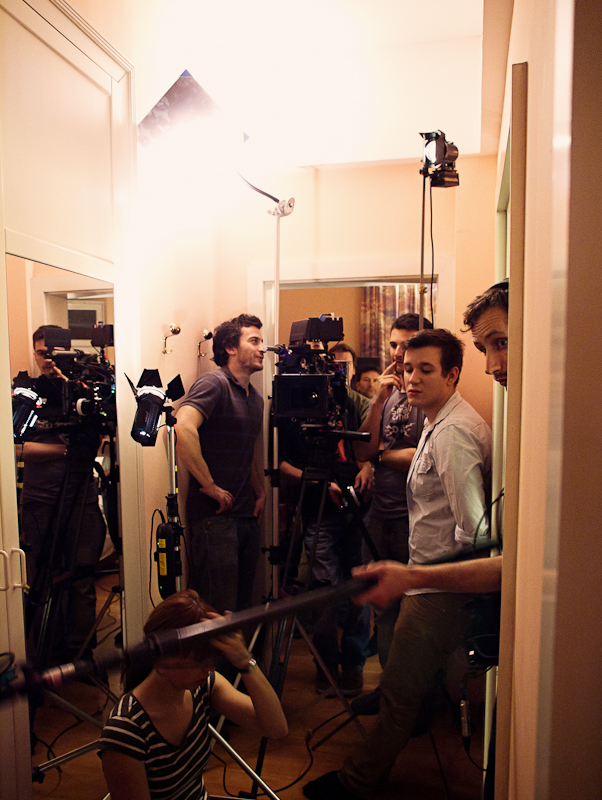
Shooting the hallway scenes of “ALEX”, lighting again using only the KFlect system and some Dedolights.
Conclusion
The Canon C500 is Canon’s first push into the 4K market, but if I bought it, I wouldn’t buy it for that reason alone. With 12-bit 2K RAW it’s a serious Red Epic and Alexa contender, and I can’t wait to see comparison between those cameras. It’s hard to beat the Alexa in terms of image quality, but considering the really similar native ISO of their sensors (Alexa: ISO 800, C500: ISO 850), the comparison will be an interesting one.
I personally think Canon needs to iron out the fan issue (mentioned above). The fan must be off during takes as long as possible, and currently, it’s really hit and miss when the thing will turn on.
For me, an uncompressed raw recorder is nice to have, but I wouldn’t be able to utilize the C500 properly without a recorder that is able to record in ProRes – that’s where the Ki Pro Quad comes in, once it’s available. I personally can’t wait to try this camera again with that recorder.
One big issue that Canon has with the C300 and the C500 is the fact that you cannot change mounts – there are PL and EF versions of the camera, and once you buy one of them, you are basically locked into that system. That’s less of an issue with the C300, because its price range is perfect so you can use it with all your beloved Canon EF lenses like I do, but with the C500 and its high-end approach, it DOES become a problem. I would be torn between the two versions – on one hand, you want that EF mount so you can use all the EF glass and possibly CP.2’s with EF mount and maybe even the new Canon Cinema Primes with EF mount. On the other hand, in this high-end area that they are targeting with this camera (priced at around €20,000 without tax), you almost need to be able to put professional PL glass on the camera, otherwise you limit yourself incredibly for the type of productions you’re targeting. Also, the PL version will be much more popular to hire out for high-end productions – but then again, you won’t be able to use the camera with your own gear because hardly anyone owns PL glass.
Sony recently announced their C500 competitor, the F5 (and F55) – and it looks like there will be a fierce battle between the two giants around these two cameras and their infrastructures, and that can only be good for us. The advantage that Sony has is that they offer such a wide spectrum of the broadcast spectrum. They can provide entire production pipelines, whereas Canon has to rely on third-party companies to produce the raw recorder that you actually need to record 4K or 2K uncompressed in all its varieties.
Having said all that, I think the C500 will take its place in the production world quickly, because the C300 has taken the broadcast world by storm for good reasons. It’s using the same 4K sensor but it delivers what many were hoping for the C300 would deliver – 4K raw uncompressed footage, 120 frames per second in 4K “half raw” and 2K, and a whole lot of other varieties, with the image quality and look we have come to love from the C300.
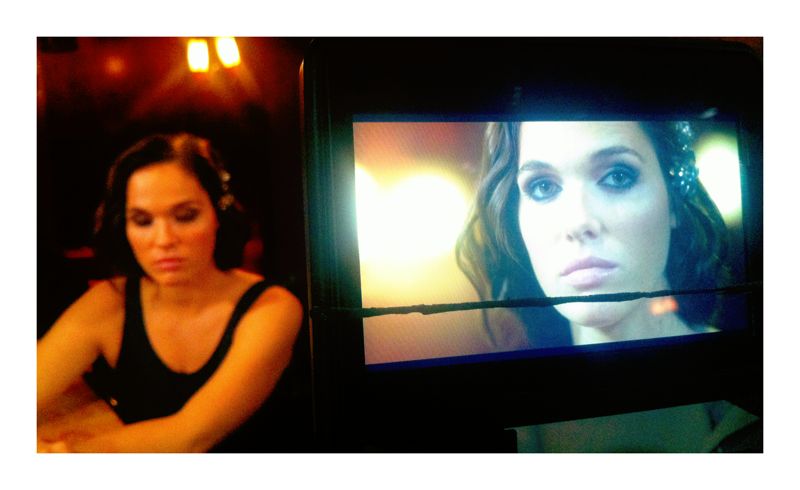
Verena Altenberger shooting a scene for the C500 short film “ALEX”. The frame line on the screen indicates the framing for Cinemascope.
Disclaimer:
I was neither paid by nor commissioned by Canon to do this review of the Canon EOS C500. We shot the film “ALEX” in our spare time using our own resources and no money changed hands between any involved companies or individuals. Our aim was to try out the C500 and find out if it’s a production tool that works for us, while shooting a small independent fictional short film at the same time.
-
I love reading about this technical advances, but this whole external recording and work flow needs to be resolved first. Very glad you’re pioneering the way forward!
-
I don’t know, is it just me but the short film was very video like, not like film, almost like every color was crashed in post too much. If you have an incredible dynamic range, than you should show it. BUT other than that, I loved the story and the twist, that was very cool, kept me on the edge till the end.
-
I have to agree with you man. For all the gear that was used it didn’t look any different than if it was shot on C300. Was this shot at 30 fps? Great story though.
-
Gustav, I don’t think this piece looks “video like” can you elaborate on what about the image you think looks video like? i.e.. the motion blur, dynamic range, highlight handling ? Were you watching this on a TV with 200Hz on?
Nino, I may be alone here but I thought it was purposefully crafted to make the audience think it was a single timeline until the reveal. In which case I thought it was very skilfully made. Just my opinion, but if anything I would grade it all to have a consistent style rather than making the two story lines “look” different with a grade.
Well done, I really liked it.
-
-
DId you just record Full RAW in 4K at 30FPS only for your shooting project ?
I had done F4K RAW in 60 FPS in last week in HK and some footage in BKK.
Cheers,
Stewart
Stewart Chong ( Facebook ) -
Why does anybody have to go through all this. just get a red epic.
which is much cheaper than C500+recorder.I prefer BMCC [not for slow mo though] than any of this branded bull shit.
-
I have a C300 and love it too. I jumped at the deeply discounted battle tested RED Scarlet sale in October and I’m happy I did. I wanted a solid 10-bit 4K workflow now and it has delivered. It’s a proven image, and the new FCPX plug-in and speed are terrific. Premiere Pro rocks it too. Thanks for the Canon Cinema Lens review, I’ve been interested in those for awhile now, I can use the EF version on both cam’s. Watch for the RED announcement on 11/30 about 4K distribution.
-
there is actually a pl-mount converter for the c300. should work on the c500 aswell. the manufacturer is TRIAD and available over Dinkel or Alphatron in the Netherlands. The only things which is a bit critical is the price (1689€ without VAT)
-
Great job Nino, all cast and crew. I was totally immersed in the story. Love when films make it relatively easy to guess the plot makes it very easy to watch. Great job with the camera and huge workflow. Look forward to giving it a play in grade.
Cheers, James
-
“Take that, Convergent Design ;-)”…Kudos to you for managing all that crop in Post! We do have production level firmware now; we’d be happy to send you two Gemini’s with Canon Raw Option on them as a loaner for testing if you would like? Email me if you’d like to take me up on the offer! 🙂
-
Great short and blog Nino! I thought the look certainly defied the budgetary restraints. Happy with my C300 PL, but the F5 is certainly interesting.
-
Hi Nino,
I criticised the film on Cinema5D. After reading your comments here, I now believe I was a bit harsh. For some reason, I was under the impression that ‘Alex’ was a Canon sponsored promo for the C500. If I had known it was simply you guys making a film for the love of it I would have been much more lenient! As I film, I really enjoyed it. The time-shifted narrative works well. I still think however, that framing this as ‘A C500 short film’ rather than simply ‘A short film’ made people look on it as a camera promo/test, and I still believe that this look could have been achieved on a multitude of cameras. While I liked it there was nothing that made me sit up and go ‘Whoa, I need a C500’. But then, that wasn’t the purpse of the film was it?Original comment here:
http://www.cinema5d.com/viewtopic.php?f=88&t=44783&p=245796#p245796 -
Hi Nino, did you by any chance record any demo footage in 12-bit mode? I know that it would have had the blue bar, but it would still be an invaluable for evaluating C500’s dynamic range capabilities. Even one DPX still would be enough. Please tell me you have one…:)
-
Did you crop your 4K ( Full RAW ) to make your ” Cinemascope ” in the short film at Vimeo ? It was because of the blue line in each frame ( Demo Canon RAW firmware on Gemini 4:4:4 )
-
https://www.sugarsync.com/pf/D8880294_66921278_146393
VERY alternative grade by someone NOT associated with the project.
i thought Nino was very cool to do this and put it up (and offer himself to the lions of the interweb)
so obviously it was only right of me to steal his footage and mangle it to my eviil heart’s content.
I downloaded the h264 mov
graded it on Baselight
added grain & a Kodak film LUT (just to see what happened)960×402 h264 here. It’s about 170 MB or something so errr compressed quite a lot but seeing as how this was just a glimpse into an alternative jamie universe i thought that would be ok.
https://www.sugarsync.com/pf/D8880294_66921278_146393
i emailed Nino first before doing this but got no reply. i hope i haven’t broke any rules, i am a bit rubbish with social media. My 11 year old despairs of me (on twitter and facebook and probably many more)
cheers
jamie -
Are there any sample RAW files I can download and edit in Resolve ?
-
hi..
i was searching information on a net about canon and found your blog it’s amazing. after seen it i found that canon picture quality is fantastic and i decided to buy it now and i must tell you that you are doing very good job budy keep it up 🙂 -
Great post. Very detailed. We are shooting on this camera currently. The look is awesome(Im just kind of sick of RED anyway). However as mentioned, the recording to a third party device is kind of a bummer. I have been talking to AJA and they still will not even send out a prototype of the quad. Once that comes I think the on-set thru post process will be easier and this camera will then truly be ready to roll out.
-
Hey Nino, was curious about how the re-conform into DaVinci went? Sorry if you already answered this. I’m currently using the KiProQuad and was curious how the file naming worked all the way from capture, ingestion into FCPX and back out to DaVinci. For instance, with RED you’ll just maintain the exact file name during the ProRes transcodes and once you do your XML you’ll be good to go in DaVinci. Has FCPX changed any of this for you in terms of clip names? Did you have any issues in this arena?
-
I just fucked terry and tabbed away form the article, i’ll go suicide now, sorry, b-bye

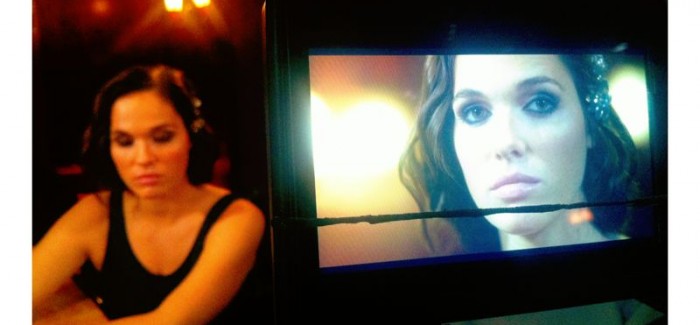

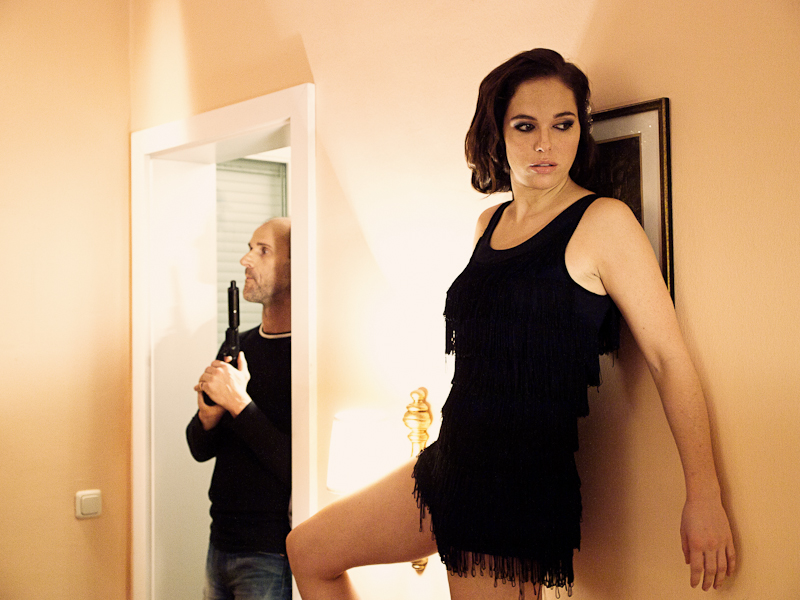
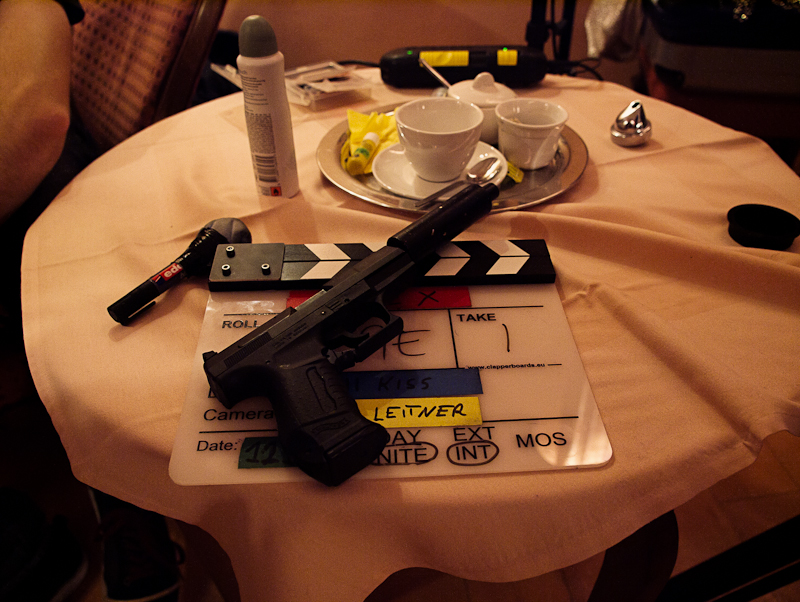
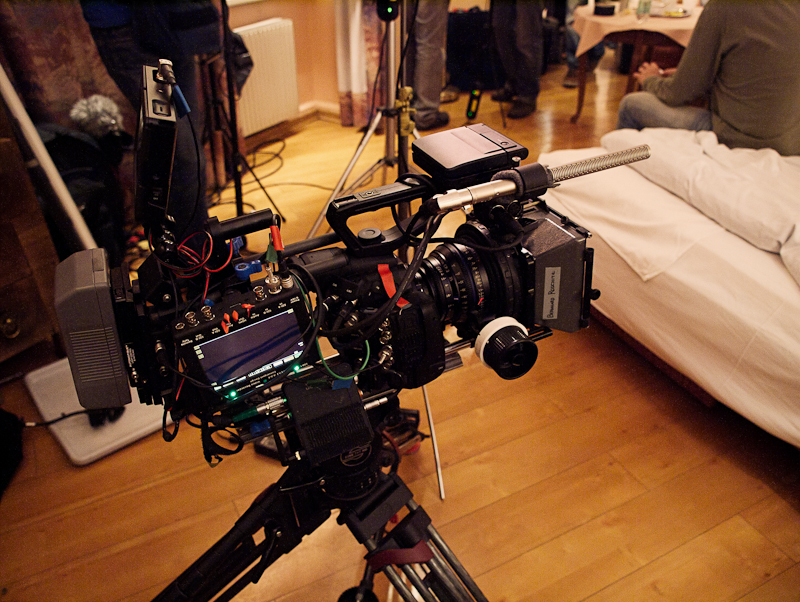

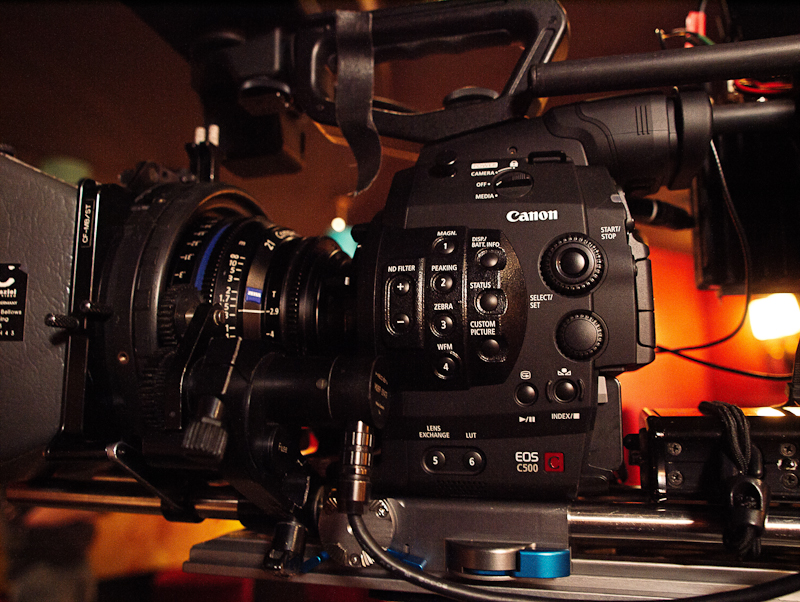
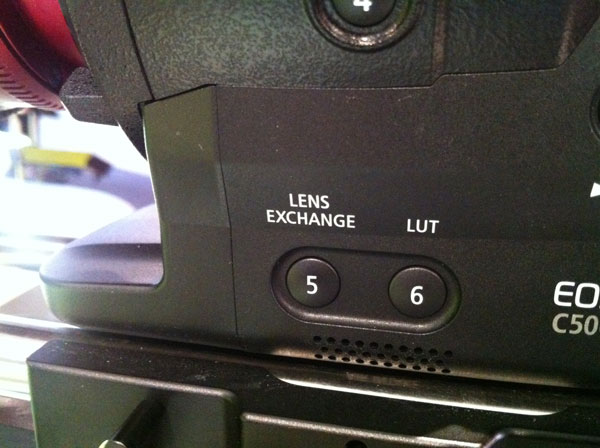
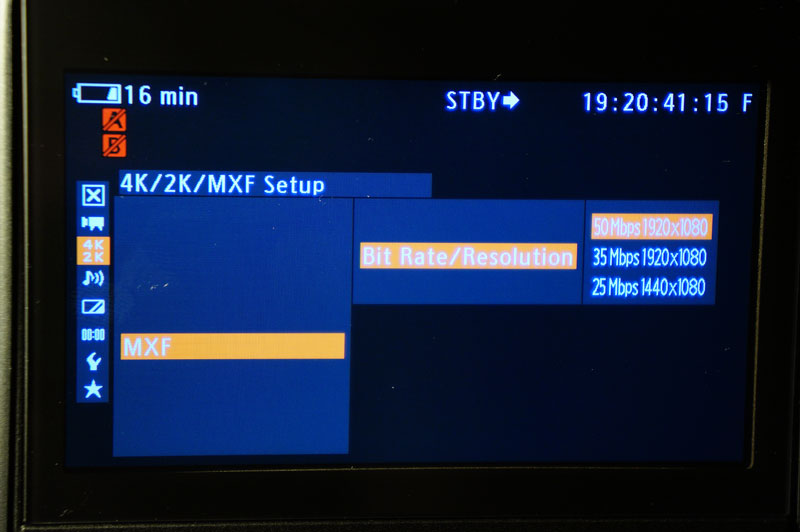
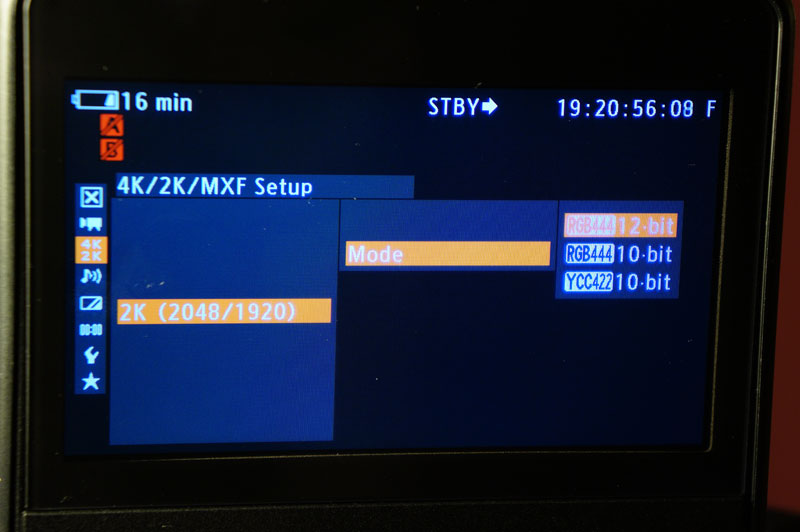
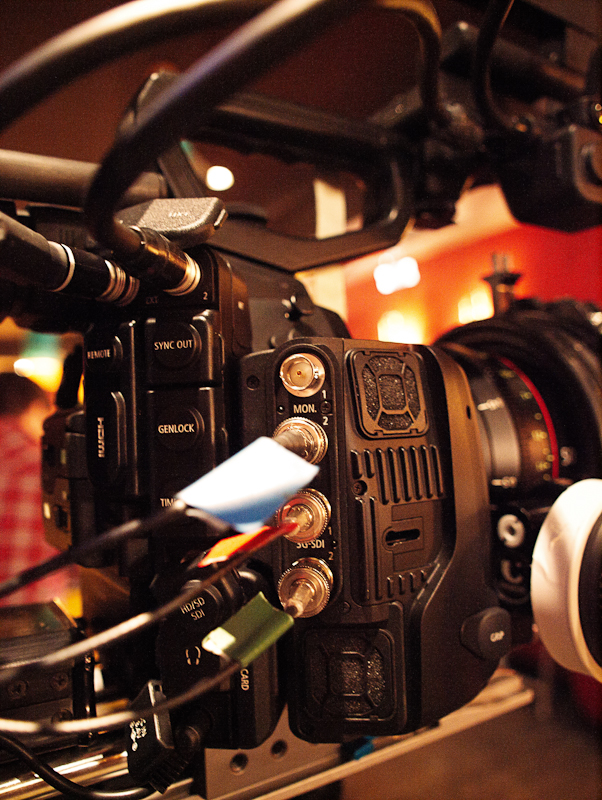
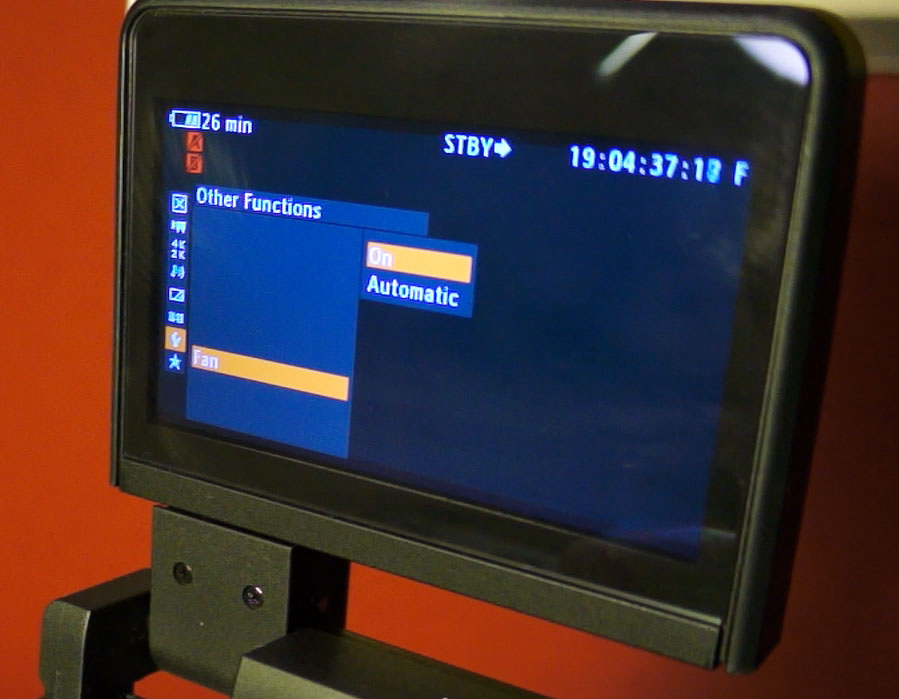
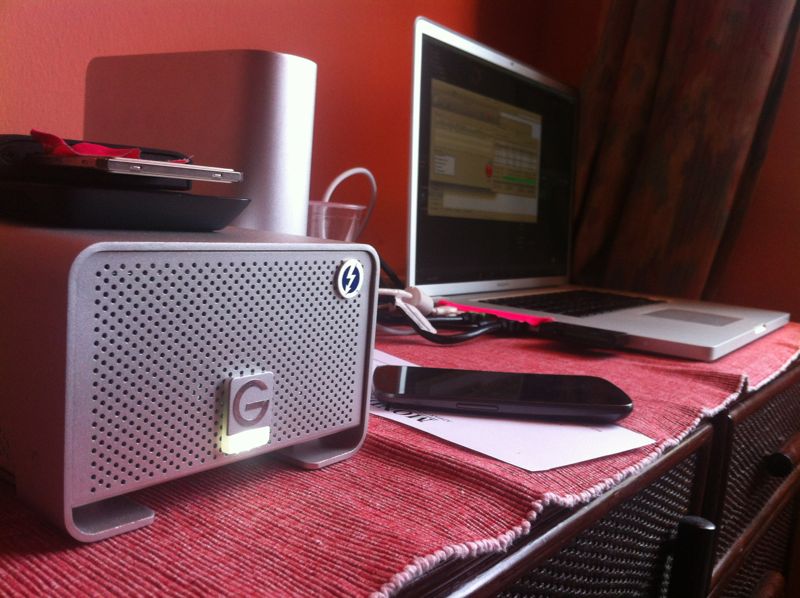
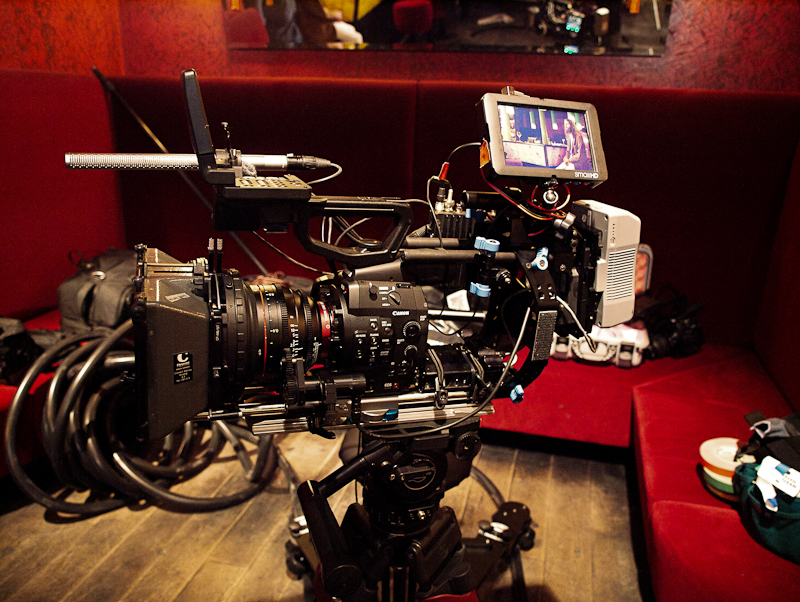
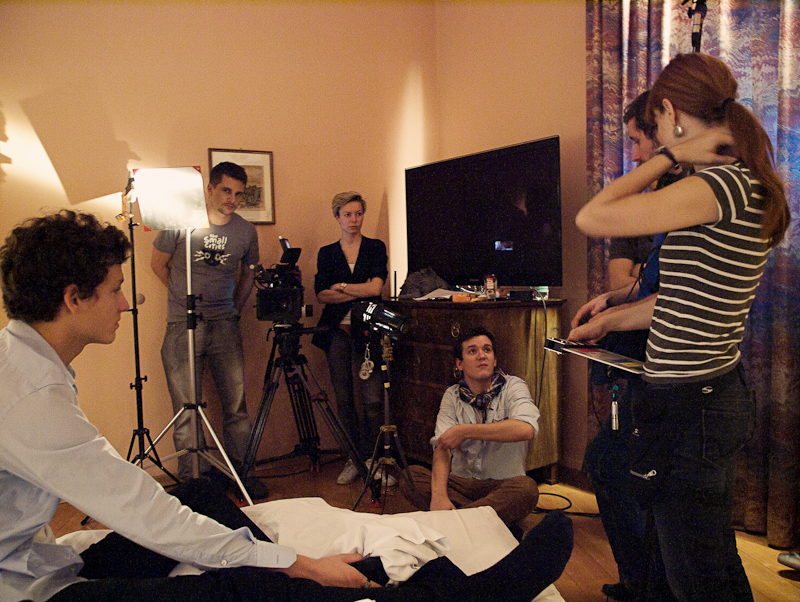

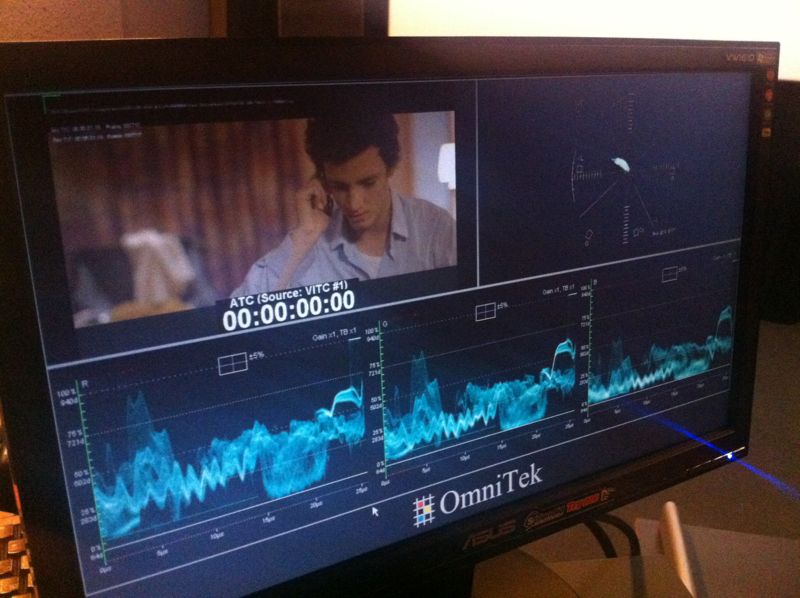

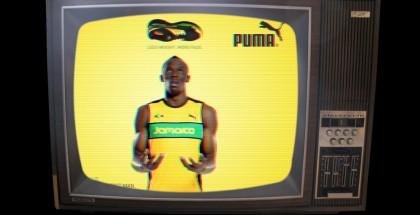
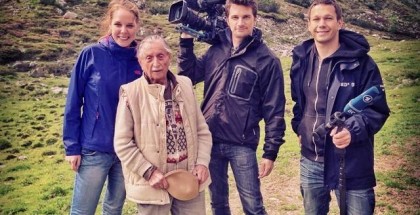
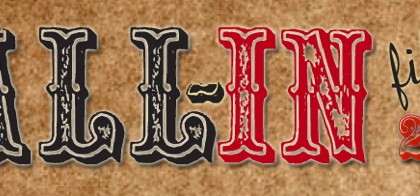
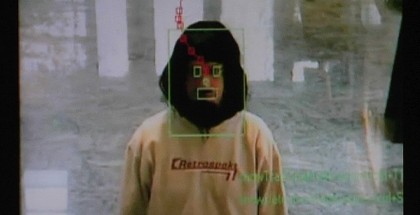
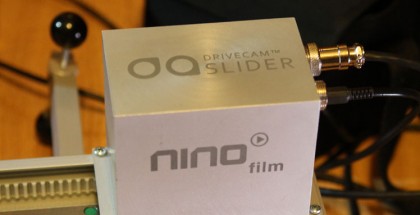
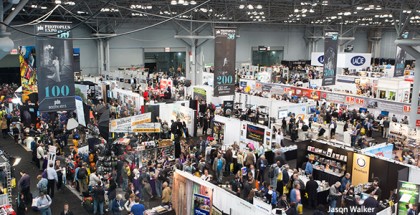
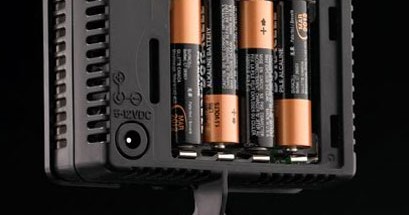












Comments